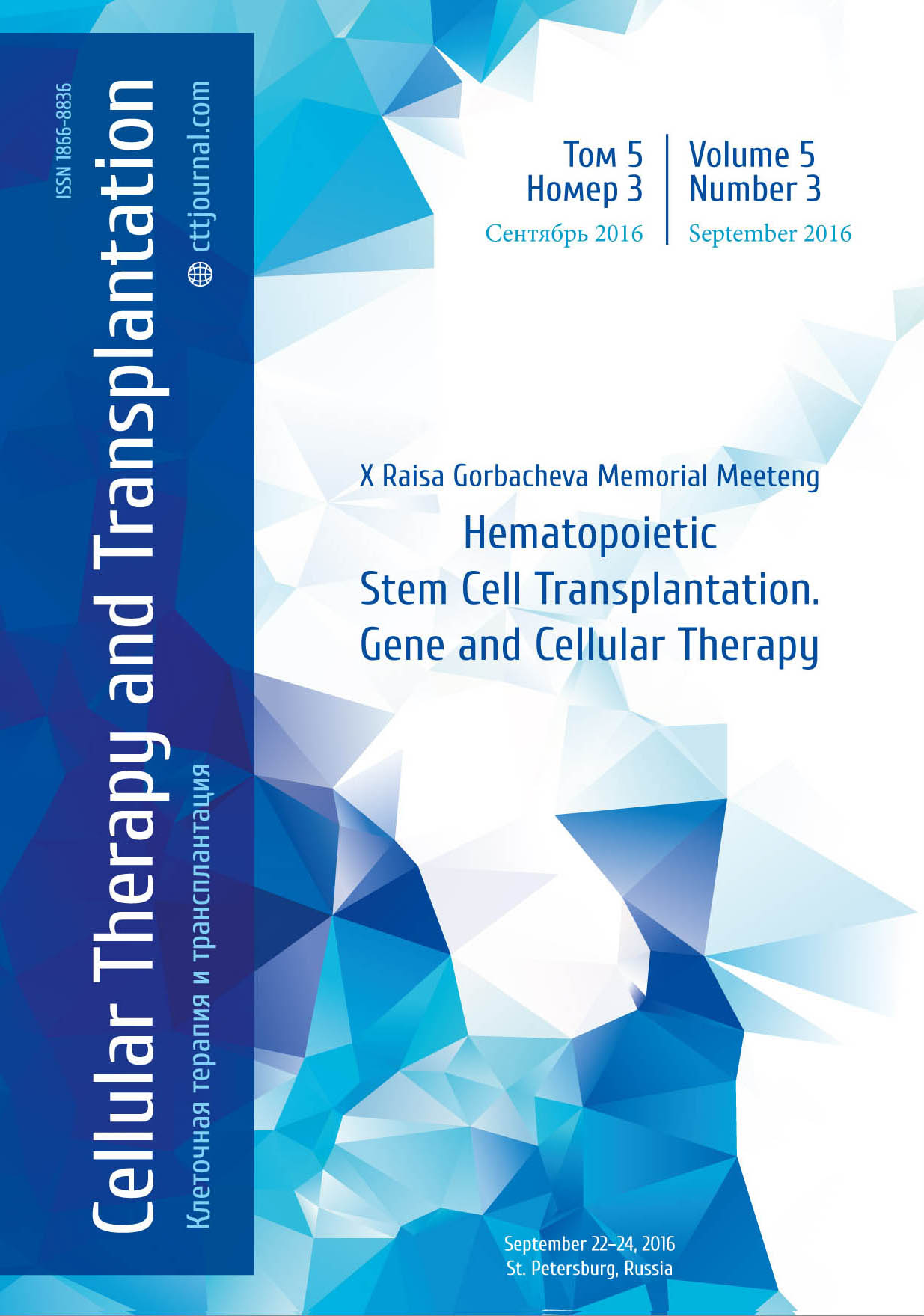Functional disparity of graft-derived T lymphocytes: experimental data
Сontact: Dr.Mikhail Drokov
E-mail: mdrokov@gmail.com
Accepted 20 September 2016
Summary
Introduction
It is well known that bone marrow (BM) and peripheral blood stem cells (PBSC) have their advantages and disadvantages as the stem cell source. Median time of neutrophil recovery and hospitalization is shorter for PBSC than for BM. On the other hand, rates of acute graft-versus-host disease (aGVHD) are lower in case of using BM as a stem cell source. Almost all authors explain it by different amount of T cells (CD3+ cells) in grafts, but less data is available about functional ability of these T cells. It may be assessed by the amounts of secreted cytokines. Superantigens (SAgs) cause a nonspecific activation of T cells by binding the T cell receptor (TCR), independently of certain Vβ domains of TCR and crosslinking it to major histocompatibility complex (MHC) molecules of antigen presenting cell (APC). Due to this stimulation, CD4+ and CD8+ cells start to secrete effector cytokines and induce activation markers on their cell surface within few hours. Here we present preliminary data on functional assay (response to SAgs stimulation) of graft T cells obtained from healthy donors.
Patients and methods
Graft samples were collected from nine healthy donors (3 bone marrow samples and 6 PBSC specimens obtained after donor G-CSF stimulation (10μg/kg for 5 days). Aliquotes of 106 cells in RPMI-1640 supplied with 10% of autologous serum were incubated with SAgs at a recommended concentration. For T lymphocyte stimulation, we used Cytostim reagent (Miltenyi Biotec, Germany). Brefeldin A was added at specified amounts 2 hours after stimulation, in order to block anterograde transport from endoplasmic reticulum to Golgi structures. The cells were then incubated for 4 hours at 37ºC, 5% CO2. Anti-CD45-APC (BD, USA), anti-CD4-APC-Cy7 (BD, USA), anti-FoxP3-PerCP-Cy5.5 (BD, USA), anti-IL- 17A-PE (BD, USA), anti-CD294-FITC (Biolegend, USA), anti-INF-γ-PE-Cy7 and intracellular staining kit (Cytofix/Cytoperm, BD, USA) were used to determine T helper (Th) subpopulations (Fig. 1) (Th1:CD45+CD4+INF-γ+; Th2:CD45+CD4+CD294+; Treg:CD45+CD4+FoxP3+; Th17:CD45+CD4+IL-17A+). 30,000 of CD4+ cells were analyzed on a BD FACSCanto II (Becton Dickinson, USA) to achieve sufficient statistical power.
Results
As shown in Fig. 2 (left panel), all the bone marrow samples showed similar Th1:Th2:Treg:Th17 ratios, and did not functionally differ from normal peripheral blood (PB) samples. Almost all lymphocytes from bone marrow are presumed to originate from peripheral blood. Meanwhile, all the PBSC grafts had different Th1:Th2:Treg:Th17 ratios (Fig. 2, right panel). Due to wide use of CD34+ cell counts as a “universal index”, and variability in total nucleated cells contents, we attempted to calculate the number of Th1, Th2, Treg, Th17 cells per 100 of CD34+ cells of grafts received by the patients. As shown in Fig.3 (right), appropriate Th1-, Th2-, Treg-, Th17- to-CD34-ratios in PBSC proved to be quite variable. E.g., the relative numbers of Th cell subpopulation may vary up to 40 times from graft to graft.



Conclusion
In vitro stimulation of graft T lymphocytes with SAgs can reflect some events which are similar to those in vivo observed in graft T cells after infusion. They may be used as a model to study the effects of graft composition upon GVHD development, graft failure and other processes in which the graft T cell may participate. Our preliminary data demonstrate that functional profile of the graft-derived T lymphocytes shows an extreme intersample variability and, probably, may affect different processes occurring in PBSC recipients, including clinical outcomes of allo-HSCT. Disclosures: No relevant conflicts of interest to declare.
Keywords
T regulatory cells, peripheral blood stem cells, graft, t helpers, th17 cells, th1, th2, bone marrow, acute gvhd
Accepted 20 September 2016


